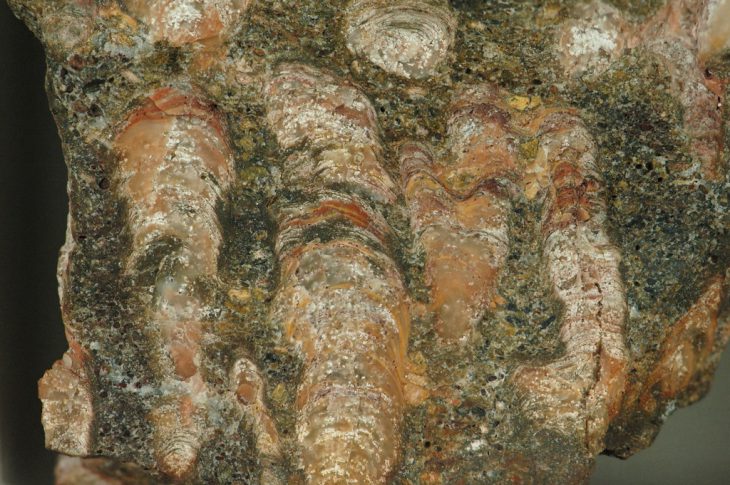Bacteria were some of the earliest life on earth. But unlike dinosaurs, these ancient bacteria could not leave behind teeth and bones. So how do we find evidence of early bacteria? It turns out some bacteria do leave behind fossils, known as stromatolites. A stromatolite is a rock structure formed by layers of bacteria and other microorganisms that is kind of like a microbe hotel. Microorganisms have been forming these hotels for nearly 3.5 billion years and are still forming them today.
Stromatolites can also form under abiotic conditions, meaning no living organisms are involved. This is why we have the need to determine the origin of stromatolites. If they are formed by bacteria, they serve as part of the fossil record. Modern stromatolites that are being built today can provide clues about the ancient microbes that built them in the distant past.
Scientists want to know which bacteria were responsible for actually building these structures. Only specific types of bacteria can do this. The “builders” are usually photosynthetic bacteria that create rock layers by producing a sticky substance allowing mineral grains to stick together. Another group of bacteria are the “tenants.” These are bacteria that live in the structure during the time it is being built, or soon after construction, but are not responsible for creating the layers. Last are the “squatters.” These are microbes that arrive much later, usually because they are washed into the structure long after it has formed.
All three types of bacteria exist in modern stromatolites. By understanding how the groups work together, scientists can put together a story showing how these structures form.

This is what a “bacterial mat” looks like. by nateeag (CC BY 2.0)
Recently, a group of scientists did experiments to identify the DNA found in modern stromatolites. The experiments were conducted at three sites: a growing stromatolite in a hot spring at Yellowstone National Park (Obsidian Pool Prime) in Wyoming, a hot spring at Little Hot Creek in Eastern California, and a young stromatolite at Walker Lake in Nevada. The scientists hypothesized that each site would have a different ratio of builders to tenants to squatters.
For example, they hypothesized that the abundance of builders should be the greatest in the currently growing site in Yellowstone. However, the site at Walker Lake was formed without the help of living organisms. This formation grew 40 meters (130 feet) deep in the ocean, so little to no light was able to reach the structure. This means that the photosynthetic bacteria responsible for building could not have been present at the time the lake formed.
The scientists began their work by collecting chunks of microbe material as well as water from each site. Back in the lab, researchers extracted DNA from the rocks and sequenced a specific gene from the bacteria. This gene, the 16S rRNA gene, has a unique sequence for each type of bacteria. This serves as a fingerprint for the community. Now knowing which bacteria were found, they can use known information about what these organisms do to determine their role in the stromatolite formation. This allows the scientists to see how many builders, tenants, and squatters were at each location.
The researchers were surprised to find that no genetic markers for builders were found in Obsidian Pool Prime. The researchers hypothesized that the samples were collected at the wrong time of year, when the tenants outnumber the builders. In the case of Little Hot Creek, the abundance of tenants again blocked out any signal from the true builders. The Walker Lake genetic data showed a high abundance of squatters. This result was expected though, because the researchers thought that Walker Lake formed without the help of bacteria.
Some of the results were not as expected, and no markers of builders were found. In the world of science, experiments do not always work, and that is okay! The experiment still revealed valuable information. The researchers were able to identify the types of bacteria found in the modern stromatolites. This is important because it shows that not all DNA present in a stromatolite is an indicator of its builders. These results show how difficult it will be to figure out which bacteria built ancient stromatolites, because even in fresh and non-degraded samples, the scientists could not find builders.
This study has provided a new way of looking at stromatolites. The model of builders, tenants and squatters shows how complex these systems are. The world of bacterial fossils is an exciting way to time travel to the past and explore the earliest lifeforms.


